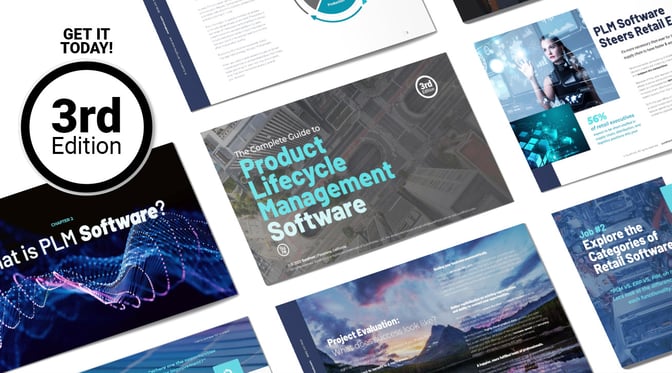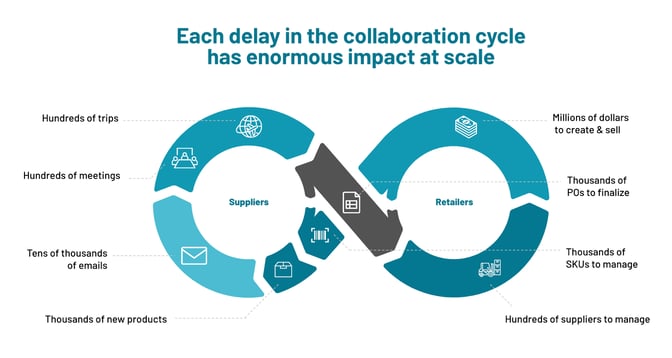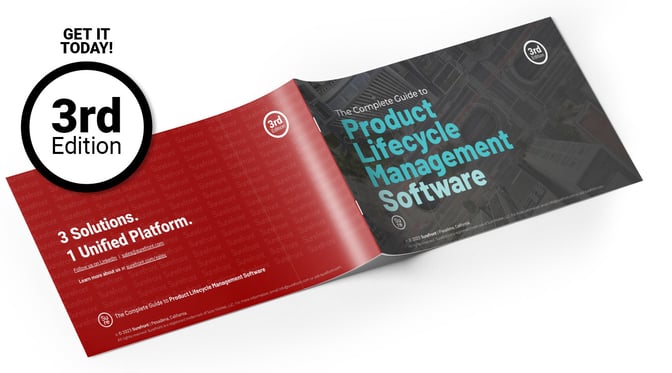Share this
Why Your Team Needs PLM Software
by Surefront on Mar 29, 2024 3:29:25 PM
Home > Blog > Why Your Team Needs PLM Software
Table of Contents
- Four signs that you need a PLM system
- The cost of delays
- Top five reasons to implement a PLM solution
Efficiently developing and selling products is the name of the game for retailers and suppliers. But, it’s a surprisingly complex and difficult task.
PLM software has entered the fray as a way to automate and unify supply chain processes. The PLM industry is projected to grow at a rate of 7.7% by 2030. This growth is a result of increased PLM adoption by retail executives who recognize the power of PLM systems to streamline product collaboration.
This has left many retailers wondering if they should join the PLM trend.

Four signs that you need a PLM system
You may not even realize how your PLM process is preventing you from getting products to market quickly. That’s why we’re discussing a few of the biggest culprits.
You rely on outdated tools
It’s common to see critical processes like finalizing product details and placing orders being managed through archaic methods like Excel spreadsheets and email threads.
These tools are woefully inadequate for the complexities of modern product development. They drastically increase the risk of errors and miscommunications.
Retailers who struggle to keep track of design revisions and supplier communications need a unified system that ensures all stakeholders are working with the most up-to-date information.
Your teams are overwhelmed
Your internal teams are not only tasked with creating thousands of new products, but are also expected to reference and compile data from previous product lines—a time-consuming and error-prone process.
Companies with archaic and complex processes risk burning out their teams and compromising the quality and timeliness of their products. Teams bogged down by manual data retrieval can’t dedicate sufficient time and resources to innovating and improving product lines, leading to missed opportunities and stagnant growth
Your data is trapped
Inefficient product information management causes data to be siloed in disparate formats such as spreadsheets, PDFs, and emails. This means real-time data is inaccessible to key stakeholders.
Not having access to the most up-to-date product information can mean that external stakeholders aren’t on the same page as the retailer. Not being on the same page can easily cascade into problems, lost time, and reduced product quality.
You have no transparency
Ineffective communication hinders collaboration and erodes trust within your organization. Teams often find themselves in the dark, with little insight into how decisions are made or why changes occur.
Consider a manufacturer struggling to understand the rationale behind last-minute design changes made by a supplier. Without a transparent system to track and document decision-making, internal and external teams are left feeling disempowered and disconnected from the overarching goals of the product development process.
The cost of delays
Retail operations have many moving parts. When an issue occurs at some point in the process, the whole cycle is disrupted.
Your team shouldn’t be constantly scrambling to keep track of basic information like the most up-to-date specs for each of your products. The whole product lifecycle should be automated and available on the cloud.
Otherwise, errors are bound to happen. The more errors that happen, the more time and money you spend getting products across the finish line.
Top five reasons to implement a PLM solution
Now that the problems are obvious, let’s discuss how a PLM system can make those problems a thing of the past.
Readily available data
A PLM system should make your data accessible on the cloud. Not only that, it should be designed to share that data in real time with your partners. That way you and your collaborators are always working on a single unified platform.
When everybody is working from the same source of truth, there’s no chance that any member of your internal or external teams will be working from outdated specs. There’s no chance of a team getting the wrong PDF or spreadsheet. And people don’t waste time fishing through emails.
Improved collaboration and communication
Collaboration skyrockets when everyone is on the same page. But what about communication? Many retailers utilize systems like Slack for internal comms, but Slack is not a good solution for communication between internal and external teams on specific products.
That’s why the best PLM systems are also product-based messaging platforms. They allow your team to discuss plans and specs with all key stakeholders in threads specific to products and projects. This messaging lives on the PLM system itself.
This is another way a top-of-the-line PLM system can save teams from email scavenging. It also enables better and more efficient product collaboration.
Streamlined workflow
Your workflow is turbocharged when product information is on a shared cloud and you’re communicating in product-based threads with internal and external partners. The hundreds of products moving through your development pipeline are now much easier to track.
A PLM solution will ideally let you customize your workflow so you can easily see what everyone across your teams is doing. You’ll be able to work with and refer to product images, product details, line sheets, quotes, and purchase orders.
And, when problems occur, you’ll have the transparency to immediately identify them and unclog your bottlenecks.
Better product, better business
It’s easy to deliver a high-quality final product when your workflows are humming along at full efficiency. You’ll be able to easily deliver the right products in record time—making it easy to capitalize on emerging trends before the competition.
Increased revenue
A PLM helps you get better products across the finish line with great speed. The positive effects from this cascade into both top and bottom-line revenue streams.
On your top line, more products are sold because they are more consistent and of higher quality. Additionally, you’re able to get more products across the finish line, so you have more to sell overall. On your bottom line, you get a better margin on your products because development is shorter and more streamlined.
Key takeaways
The product lifecycle is often chock-full of inefficiencies that are brought about because of outdated tools, overwhelmed teams, trapped data, and lack of transparency. Product Lifecycle Management software has entered the fray to overcome these challenges.
Retailers who implement a top-of-the-line PLM solution can easily access data, collaborate on a unified platform, streamline their workflow, and ultimately deliver a better product at record speeds. This PLM-enabled process leads to more sales and better margin.
If you’re ready to learn more about finding and implementing a PLM system, please download our Complete Guide to PLM Purchase and Implementation.
See the next article in our PLM series on purchasing the best PLM software.
Related ArticlesLeveraging PLM Software for Efficient Workflow Management
PLM & PIM Solutions Drive Sales in 2023
PLM, ERP, CRM, PIM … Oh My! Demystifying Retail Software Terminology
Share this
- PLM Software (35)
- PIM Software (29)
- Trending Topics (20)
- Apparel & Fashion (14)
- CRM Software (14)
- PLM Implementation (9)
- Merchandising (6)
- Tech Packs (6)
- Catalog Management (5)
- PLM RFP (5)
- Success Stories (5)
- Sustainability (5)
- Line Sheet (4)
- Luxury Goods & Jewelry (4)
- Product Development (4)
- Retail (4)
- Supply Chain (4)
- Category Management (3)
- Data Import (3)
- Home Furnishings (3)
- Wholesale (3)
- Consumer Packaged Goods (CPG) (2)
- Cosmetics (2)
- Data Export (2)
- Health & Beauty (2)
- Industry Events (2)
- RFQ & Quote Management (2)
- Consumer Electronics (1)
- Import & Export (1)
- Inventory Management (1)
- Pet Stores (1)
- Purchase Orders (1)
- Report Builder (1)
- Textiles & Raw Materials (1)
- Unified Solution (1)
- Vendor Management (1)
- White Paper or Case Study (1)
- March 2025 (3)
- January 2025 (8)
- December 2024 (5)
- November 2024 (3)
- October 2024 (5)
- September 2024 (6)
- August 2024 (2)
- July 2024 (1)
- June 2024 (3)
- May 2024 (4)
- April 2024 (5)
- March 2024 (3)
- February 2024 (2)
- December 2023 (4)
- September 2023 (2)
- August 2023 (5)
- July 2023 (3)
- June 2023 (2)
- May 2023 (2)
- April 2023 (4)
- March 2023 (5)
- February 2023 (3)
- January 2023 (5)
- December 2022 (4)
- November 2022 (3)
- October 2022 (4)
- September 2022 (5)
- August 2022 (4)
- July 2022 (3)
- June 2022 (1)
- May 2022 (1)
- February 2022 (1)
- January 2022 (1)
- September 2021 (1)
- May 2021 (1)
- April 2021 (1)
- February 2021 (1)
- December 2020 (1)
- May 2020 (1)



